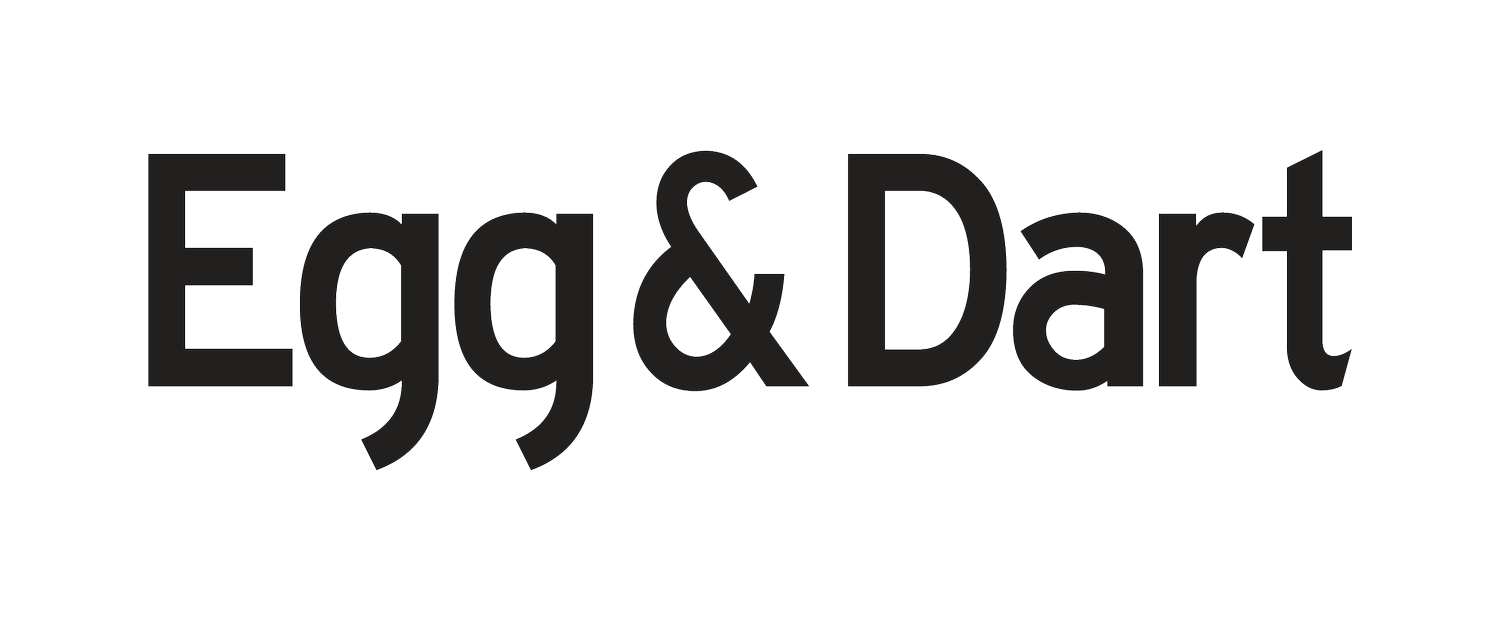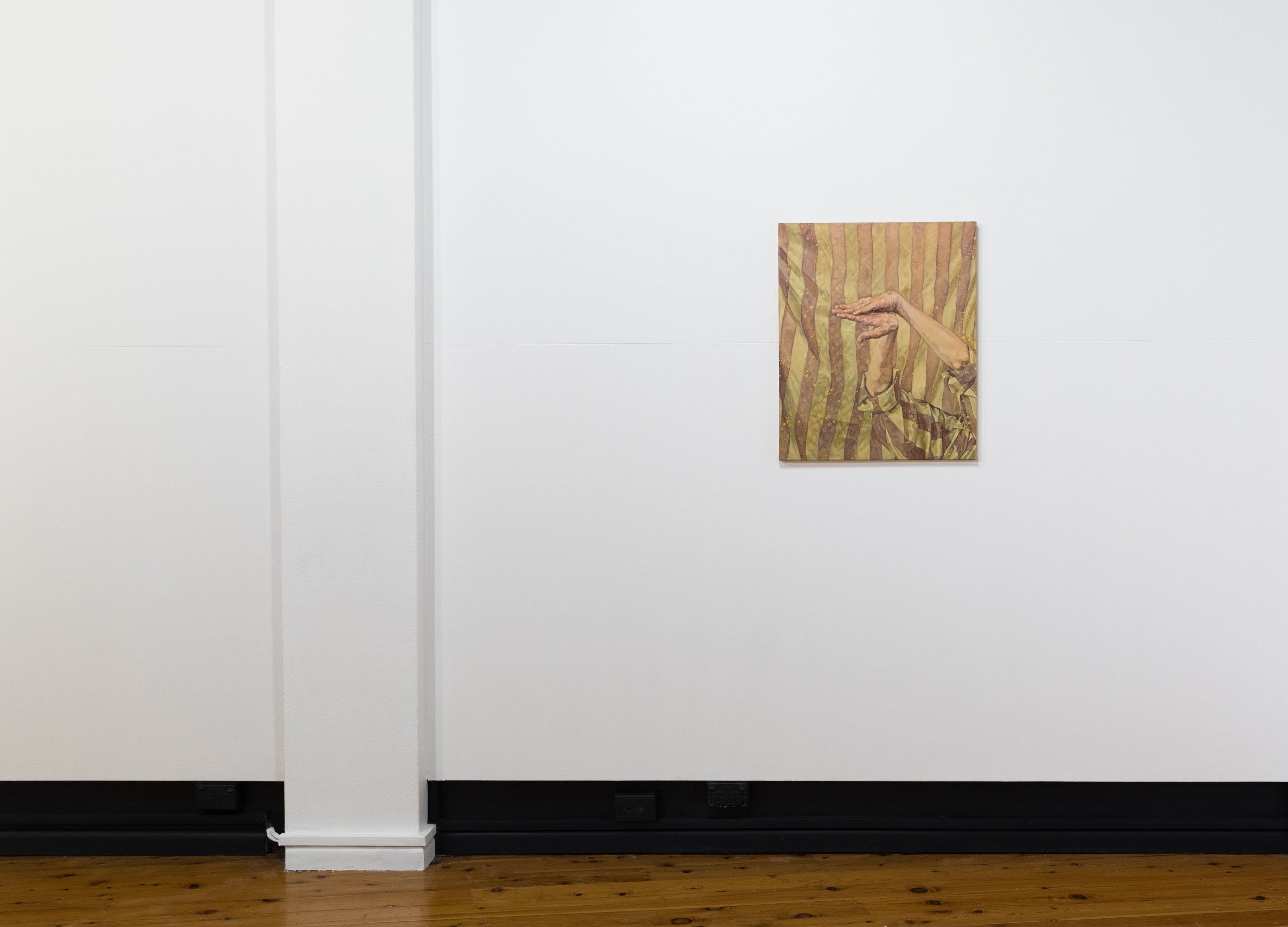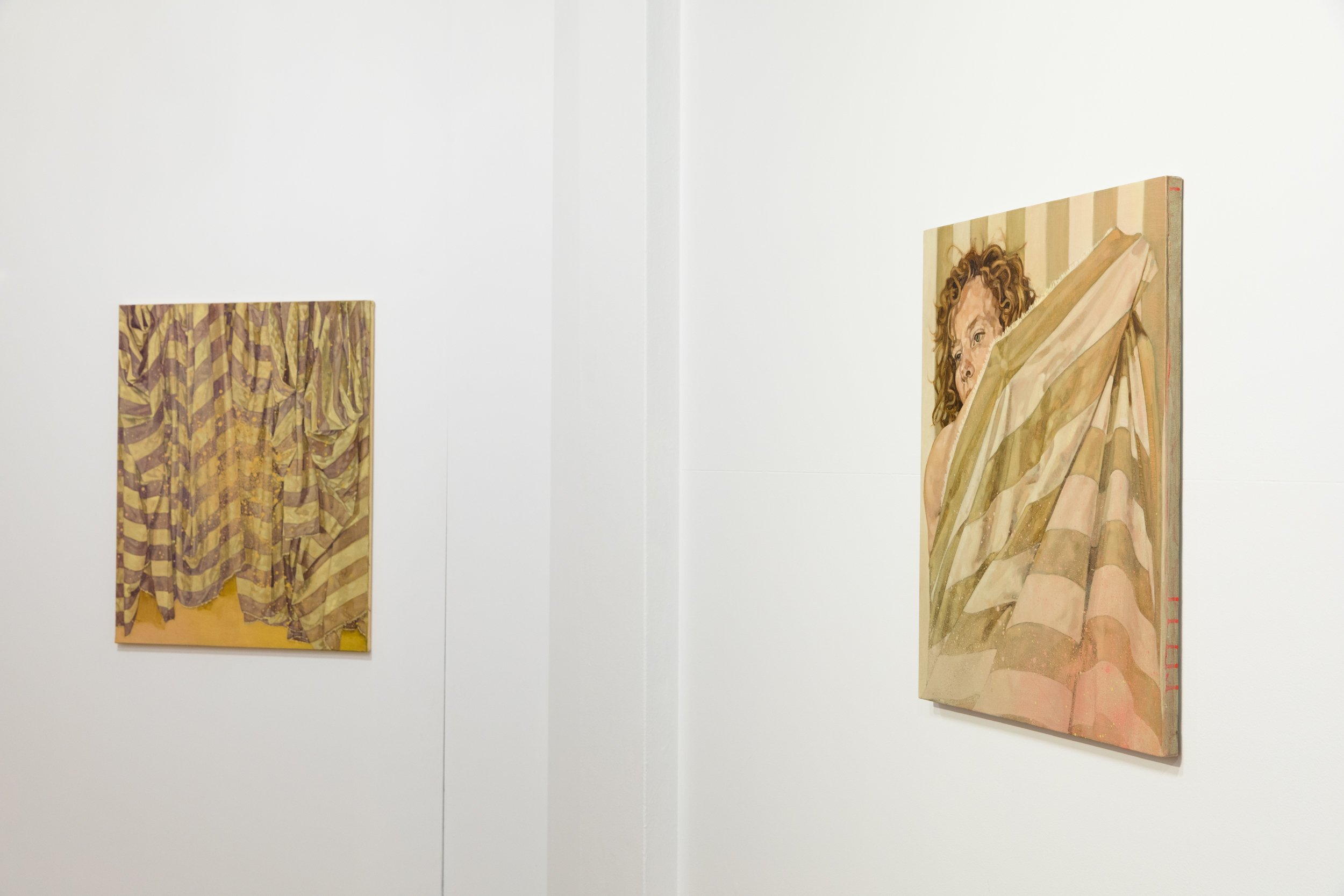Clare Thackway shows us how figurative painting can unveil the relationship of intimacy to distance. The space between bodies is an ongoing consideration explored through the use of drapery and the stripe, with these ideas now palpable in the context of a global pandemic. The cloth creates separation and a physical barrier but this can also be felt as an act of collective care. There is a tenderness in the works as they unfold aspects of the body in vulnerable states. These are intimate paintings that contemplate our anxieties around contagion and a health response that seeks to separate and demarcate. The sensation is made visceral in the paint method through aerosols projecting across the surface. It appear as glitches, spots and sprays – masking fluid on the base layer generating areas of vivid pink and yellow that abstract the visual field. The breath, an essential expression of life, now requires containment and management.
The artist relocated to Paris from the Illawarra, and the colour has shifted to evoke this quite extreme distance. The paintings are interiors but eucalyptus green and gold hues cast a landscape quality over the work and there is a dryness to the palette that suggests Australian conditions. The softer lilac tones comprehend the more subtle light found in the sky at dusk. The muted approach to this light then brings us into the northern hemisphere.
The fabric stripe is a fundamental pattern used by Thackway for both contemplation and compositional strategy. The thick bands fragment and distort the figure by introducing a false contour that twists to create illusion. The shifts in surface play a trick with perspective – are the bodies standing or in repose? Are we looking down or across? Is there a body there at all? Culturally the stripe also has fascinating evocations – for hazard or hygiene, freedom and confinement. The artist works with these fluid associations as a personal trope that allows her to explore psychological states and social dynamics.
Clare Thackway works with subjects she knows well and although these are not portraits there is an intense feeling of intimacy in the work. This is countered by the drape of fabric and painterly surface interruptions that acknowledge the spaces between us. Previously the cloth was employed by the artist to explore connection, but in this current time we may feel the masking of the body as a deliberate separation. The newly pictured intermediary space, no longer a void, contains splatters of paint – aerosols with anxious potential. The spots that float in the foreground suggest an invisible interrupting force. In this context the works make contact with the interdependence of our bodies, intricately linked while separated by borders and systems of control.
-Melody Willis









